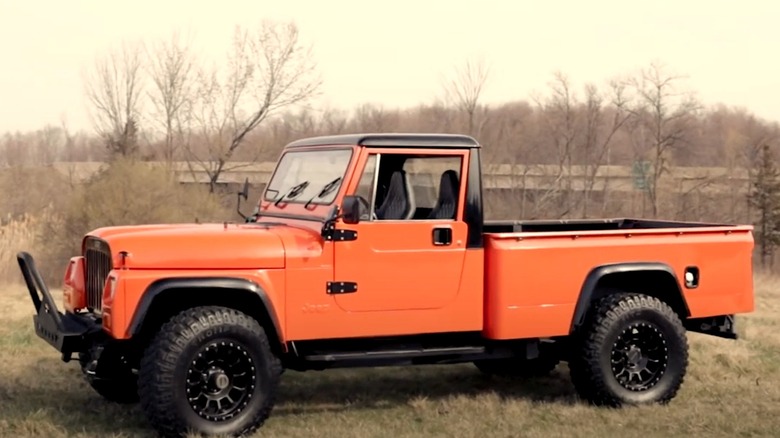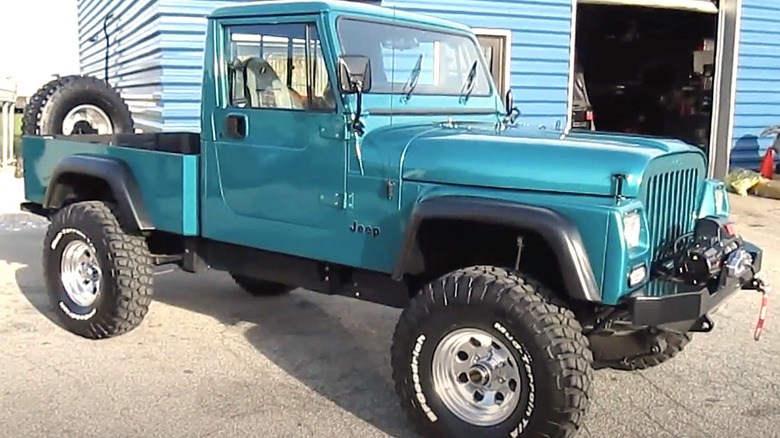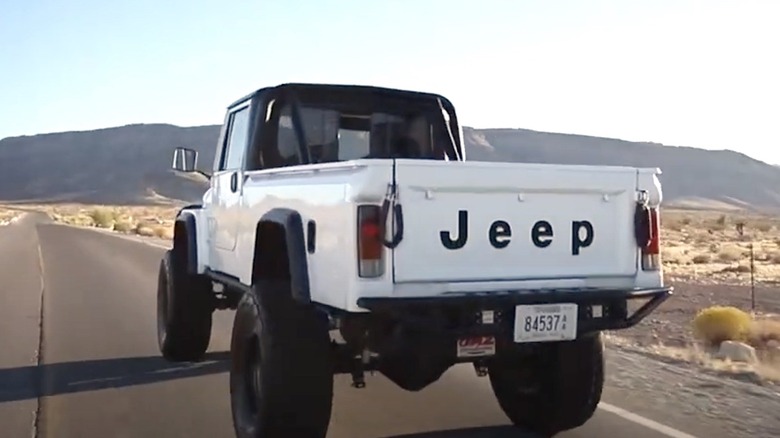Jeep CJ-10: The Rare Truck You Probably Didn't Realize Existed
Jeeps have long been regarded among the best 4WD vehicles ever built, and that's been true pretty much since the moment the company transitioned their World War II warriors into civilian-ready work horses. For much of their early production run, the rebranded civilian jeeps carried the CJ prefix followed by a numerical designation, like the long-running CJ-5 and CJ-7 models. In the mid-1980s, Jeep delivered one of the more radical builds to ever grace the Jeep CJ line — the CJ-10.
If you're unfamiliar with the CJ-10, it wasn't actually a jeep in the traditional sense. Rather, it was a pickup truck with a bed that was attached to the recognizable front end of a CJ. From a conceptual standpoint, the CJ-10 made a lot of sense for Jeep, with the company at least in theory adding a whole new vehicle to the CJ line while only really needing to manufacture half of the build for production. However, the CJ-10 was a bit of an oddball in terms of looks, which may be part of why the jeep-pickup hybrid remains one of the more obscure builds in the company's iconic lineup.
Here's what you need to know about Jeep's CJ-10 pickup truck.
Jeep's CJ-10 was mostly sold outside of the U.S.
If you call the United States your home, there's a pretty good reason you may never have heard of the CJ-10. That's because the truck-bed adorned Jeep wasn't manufactured for sale in America. Rather, the Jeep truck was conceived and designed for sale in markets more friendly to light utility pickups with 4x4 capability. In particular, Jeep was hoping the CJ-10 would help crack the Australian market, where such models had been very successful.
The road to the Outback was a relatively long one for the CJ-10, however, with Jeep's design team reportedly having begun to plot out the vehicle's production as early as 1977. The first CJ-10 rolled off the line in South Bend, Indiana in 1981, and the vehicles would continue to be made there for export to Australia, New Zealand, South America, and other places beyond until 1983, when Jeep moved production to Mexico.
Toward the end of its production run, the U.S. government tasked Jeep with transitioning the 4x4 CJ-10 pickup truck concept to a bed-less two-wheel-drive tugger model designed to haul planes around airfields. The result was the CJ-10A. Not long after this transition, Jeep pulled the plug on the base CJ-10 build altogether.
The CJ truck was a short-lived addition to the Jeep lineup
Though exact production numbers are unknown, Jeep reportedly manufactured less than 1,000 CJ-10s during its production run. The CJ-10 was reportedly well-received when it made its way to showroom floors in Australia, but it never became the big seller that the company hoped it would be in the ute-loving land down under. Further complicating matters was a dramatic drop in the worth of the Australian dollar compared to the U.S. dollar – an issue that may have priced the CJ-10 out of the Australian market.
The CJ-10 didn't fare much better in other markets, and after producing just about 2,000 of the 4x2 CJ-10A aircraft tug models, Jeep ended production of the build altogether in 1986. Despite the CJ-10 failing to become a best-seller, the vehicle has become a relatively sought-after artifact for Jeep collectors in more recent years. Many CJ-10s have made the long journey from Australia and beyond to the driveways of some North American Jeep lovers, with the vehicles' unusual builds making them prime fodder for resto-mod treatment.
There are, of course, just as many Jeep collectors who've taken a more traditional restoration route with their CJ-10s. Though it may not be one of the best Jeeps of all time, owning a CJ-10 means owning a wholly unique artifact in the company's long, proud history.


